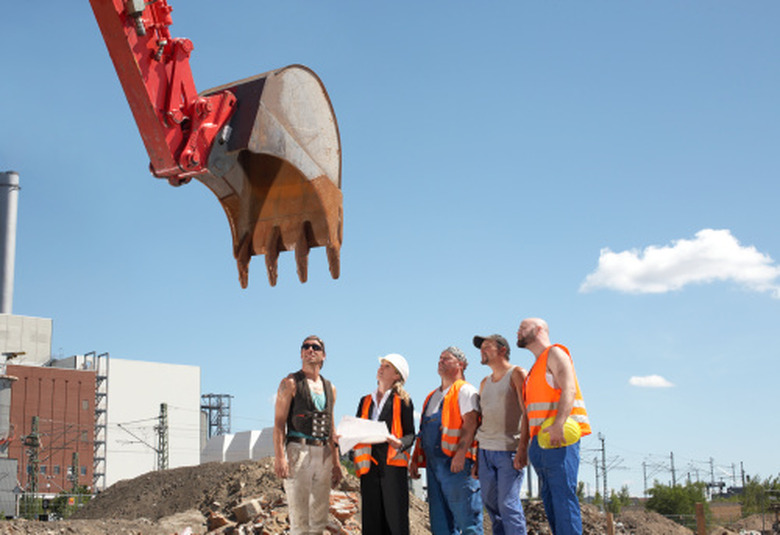How To Calculate The Soil Compaction Factor
Things Needed
-
Small dirt trowel
-
Lab beakers
-
Oven
-
Hygrometer
-
Standard proctor test weight
-
Scale
-
Sand cone device
Proper soil compaction ensures that things stay in place after they are built. Whether it's an underground pipe, a sidewalk, a home, or a skyscraper, it all depends upon the soil being stable, and not moving due to water or further compression. Various machines compress soil, but the key to using them is knowing how far the compaction still has to go, and when the proper target compaction is achieved. A low-cost, quick way to find this out is combining the proctor test, which tells the maximum the soil can be compacted, with the sand cone test, which tells how compacted the soil currently is.
Step 1
Remove a small, representative sample of soil and send it to the testing laboratory.
Step 2
Place the soil sample under a heavy weight to compress it. The purpose of compression is to drive all the air out of the soil and force it to occupy the smallest space possible. Comparing the maximum it can be compressed with the soil in the field tells the engineer how much more the soil can be compressed out in the field. Each proctor test uses the same compression system that is uniform from lab to lab to ensure that all labs give the same type and quality of results.
Step 3
Weigh the soil sample after it has been compressed. Dry it in the oven for 12 hours to drive out all the water content. Weigh the soil again after it comes out of the oven to find the amount of water content that was originally in the soil sample. Maximum compaction occurs when there is no water in the soil so this helps understand how the existing water is affecting the compaction efforts.
Step 4
Dig a small hole into the soil, approximately 6 inches by 6 inches, and remove the soil for the and cone test as the proctor test is being done at the lab.
Step 5
Weigh the soil as it comes from the hole, and dry it in the oven for 12 hours to drive out all the water content. Weigh it again to find out the amount of water that was in the sample.
Step 6
Fill the hole that the soil came from with sand from a cone device. This is a bottle with a funnel at the bottom and graduated measurement markings on the side. This allows the engineer to see exactly the volume of sand leaving the bottle and going into the hole.
Step 7
Divide the weight of the dry soil by the volume of sand required to fill the hole to find the soil density in pounds per cubic foot. For example, if the weight of the soil is now 1 lb. and the volume of the sand in the hole is .5 cubic feet, the density would be 1 lb/.05 cubic feet, or 2 lbs. per cubic foot.
Step 8
Compare the density of the sand cone test with the maximum density found in the proctor test to determine the relative density between the two. The difference between the two measurements tells how far the soil must be compacted to achieve maximum density.
